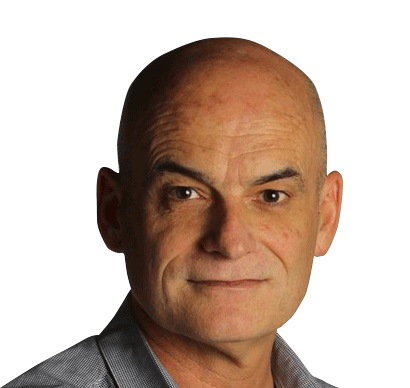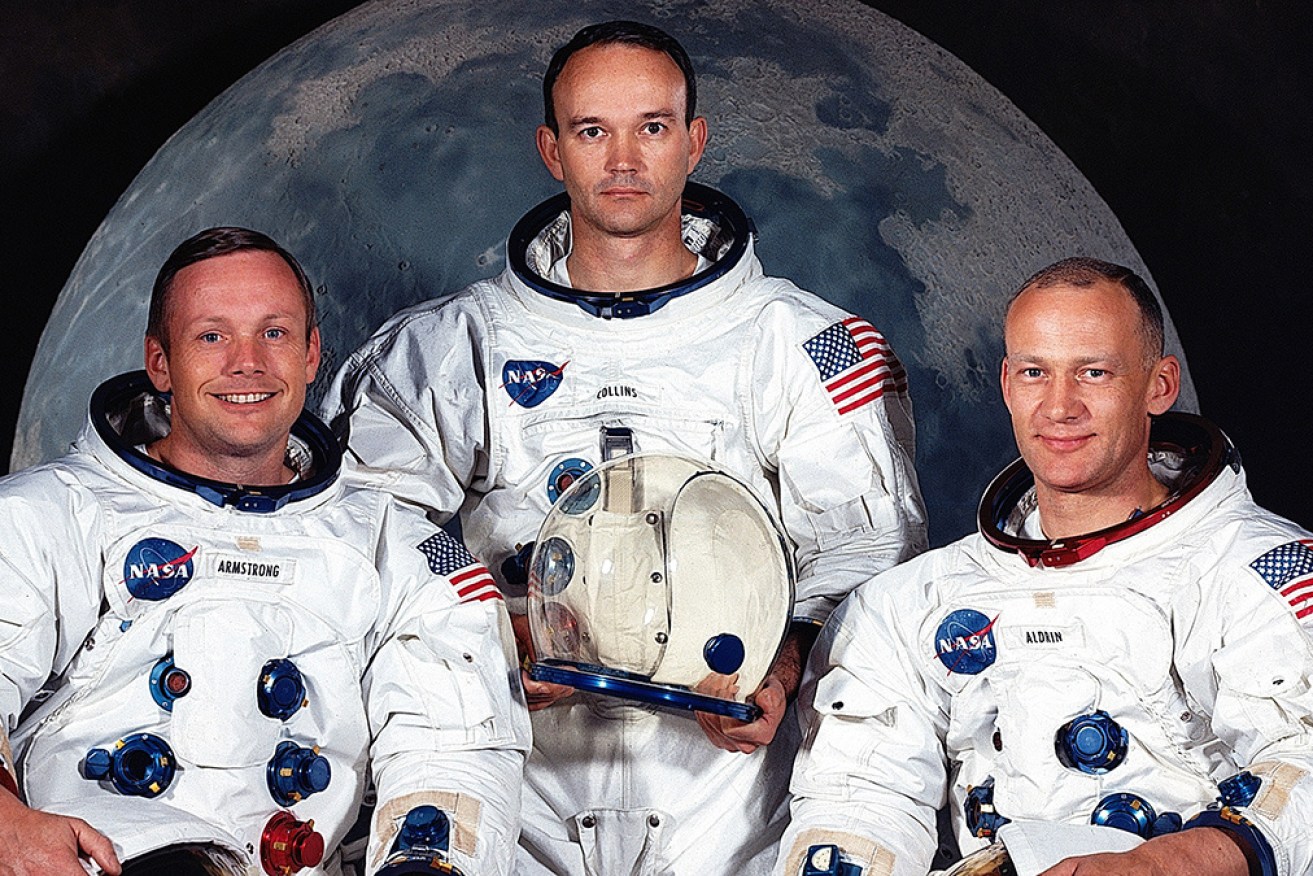The man who should have been the first to walk on the moon


The Apollo 11 crew: Neil Armstrong, Michael Collins, and the man who should've walked first. Photo: Getty
There’s a five-year-old kid sitting cross-legged on the floor in front of the TV. His freckled face is framed by a severe short back and sides haircut.
There’s a loose tooth he’s forever probing with his tongue. There’s a meat pie on a plate next to him turning cold. There’s a baby crying in the background. Easy for a kid this age to be distracted. But not today.
He squints at the screen doing his best not to blink in case he misses something. The TV shows a 38-year-old man more than 380,000 kilometres away. Further than anyone has been before.
His ghostly white figure lumbers and blurs across a grey alien landscape. His tinny voice crackles and fades. But it doesn’t matter. His boots are leaving the first trace of humanity in moondust and the kid is sure his own footprints will join them soon.
That’s the plan, anyway. Become an astronaut like Neil Armstrong. Continue humanity’s conquest of space. The kid is sure that by the time he is an adult half the solar system will be colonised.

Neil Armstrong became the hero of children across the globe. Photo: Getty
There will be weekend getaways on the moon. Summer holidays on Mars. So he practices for when that day comes. When other kids play at being football stars or comic book heroes, he is always the First Man on the Moon.
But as he grows older, that sense of awe and hope … it crackles and fades, too. Grand voyages to Mars are replaced by ugly space stations and reusable space shuttles.
It’s like replacing the trip of a lifetime to Europe with a bus journey to Canberra. The age of exploration might continue but it will be robots going where no machine has gone before.
The kid never loses sight of Armstrong. It’s not an easy thing to achieve because the man himself retreats from view. The commander of the Apollo XI mission becomes a recluse, shying from public appearances, reluctant to tell his story.
His number two and a man with a more interesting name, Buzz Aldrin, fills the vacuum instead. Aldrin never meets a microphone he doesn’t like. Somehow it seems fitting. The iconic photograph, the one that will always represent one of the great moments in human history, shows Aldrin standing on the Sea of Tranquility with his skipper’s shadow reflected in his visor. It’s as though Armstrong has already begun planning to step away and hide.

Buzz Aldrin, always ready with a smile for the camera. Photo: Getty
Years pass. The moon continues to circle the earth every 27 days. The kid becomes a grown man and he keeps wondering why the man who walked on the moon effectively vanished from the face of the earth.
So one day, with a baby of his own crying in the background, he finds an address in Ohio and writes to Armstrong. He tells Armstrong he is an Australian journalist with a book or two under his belt and while it might be a long shot, he wants to write a book about him. But not just about his time on the moon. He wants to understand the man himself and the reasons why he turned his back on the world.
A few months later a type-written letter arrives in the mail. It’s from Armstrong’s personal assistant and the tone is sniffy and condescending. It says Mr Armstrong has been approached by many “acclaimed” and “best-selling” authors over the years including Gore Vidal and Norman Mailer. He has always declined these requests and “naturally” he must do so again. Translation: nice try, Sonny. But you’re not even in the ball park.
Without Armstrong’s assistance it’s going to prove difficult to write an entire book with the title Lost In Space – How Neil Armstrong went to the moon and never came back.

Across the globe, in living rooms and at public gatherings, people were glued to screens to watch history unfold. Photo: Getty
More years pass. Armstrong finally co-operates on a book with a US professor. It’s a dull work that devotes pages to explanations of engineering techniques and little about the inner workings of the man’s mind. Hollywood will eventually find a way to turn it into an even duller movie starring Ryan Gosling.
And then, in 2012, Armstrong makes his final escape, passing away at the age of 82. I’m no longer that kid who watched him take those first steps, who kept scrapbooks filled with clippings about him, who worshipped the dust he walked on.
When I hear the news that the man who gave me my strongest childhood memory is dead, I shrug. My nights of staring at the moon in wonder and imagining what might have been are long over, worn down by the demands and mundanities of everyday life.
Not long after, I’m invited to a black tie dinner. One of the special guests is Aldrin, who is touring Australia. There are strict rules in place. No autograph seekers. No photographs. No approaching the man without prior permission.
Bugger that. I can see him sitting a few tables away and I’m amazed at how small he is. Of course he is. Somehow we imagined the astronauts to be giants but towering men were never going to squeeze into those tin cans they sent into space.
I wait until entrees are served and his minders are tackling their prawn cocktails and I bound over to his table. He sees me coming. He’s encountered thousands of glassy eyed fans over the years. He graciously gets to his feet and shakes my proffered hand. The rest of his table falls uncomfortably silent. Protocol has been broken.
More than four decades have passed since I watched Aldrin and Armstrong walk on the moon and now I don’t know what to say. So I blurt out the first thing that enters my mind.
“It should have been you, Buzz.”
There’s a stirring at his table. Chairs are scraping back. Someone coughs nervously. Buzz’s wife has a horrified look on her face. Who is this stalker, this weirdo?

The author with Buzz Aldrin, in the photo that broke protocol. Photo: Gary Linnell
I pat Buzz on the shoulder. I pull out my phone and ask if he would mind posing for a photograph. Well, the man loves a camera even more than a microphone and he instinctively turns to the lens and smiles. My time is up. I mumble an apology of sorts for interrupting him and make like Armstrong into the shadows.
But as I move away I glance back and I swear Aldrin is winking at me. There’s a knowing grin on his face, too. He’d heard what I’d said. He knew it was true, too. He’d always known.
The wrong man went first.








